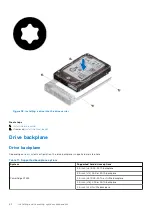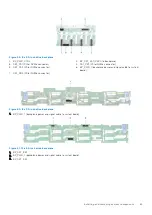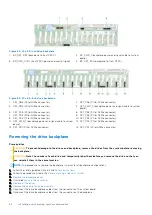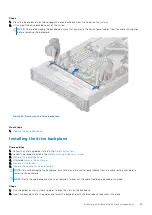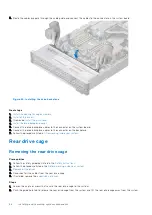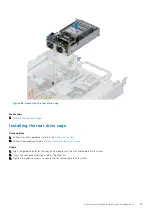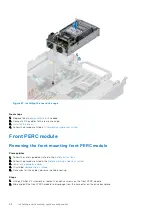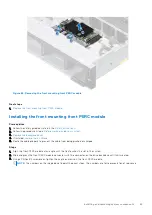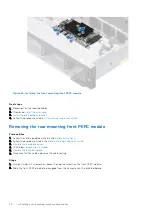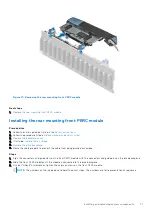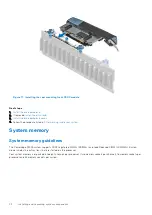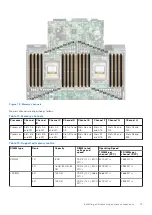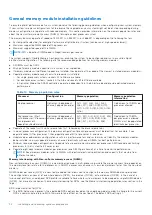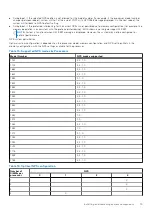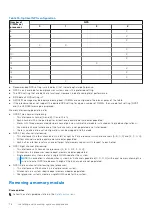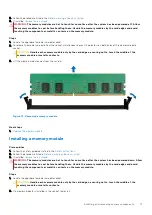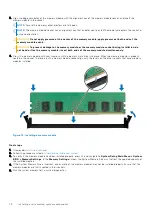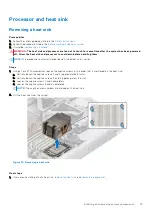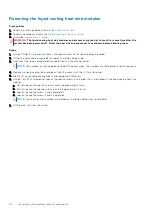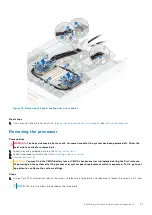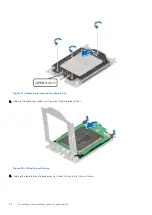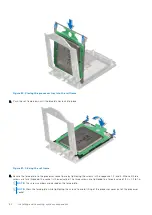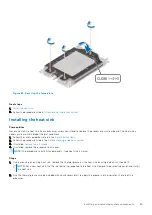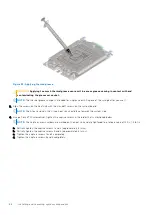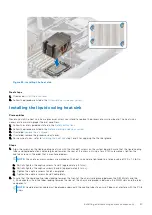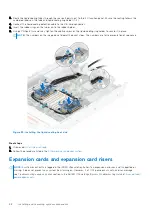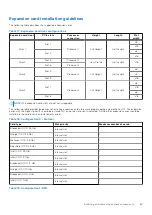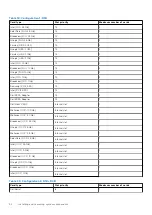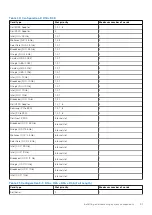
Table 16. Optimal NPS configuration
Number of
DIMMs per
processor
NPS
0
1
2
4
5
X
6
X
7
X
8
X
X
9
X
10
X
11
X
12
X
13
X
14
X
15
X
16
X
X
●
Recommended NPS setting is marked by X that indicate optimal performance.
●
NPS0 is only available for dual processor systems and is the preferred setting.
●
The NPS setting that are blank are functional. However, indicate non-optimal performance.
●
BIOS default NPS setting is 1.
●
UEFI0391 message may be displayed during boot if DIMMs are configured in the blank spaces of the table.
●
If the processor does not support the desired NPS setting for a given number of DIMMs, then use default setting (NPS1)
and the UEFI0391 message is displayed.
Memory interleaving population rules
●
NPS4: Two channel interleaving
○
This interleaves channel [A and B], [C and D], etc.
○
Each channel within the pair requires at least one equal memory modules populated.
○
Works with three memory modules per channel pair, non-symmetrical module is stacked on top (odd configurations).
○
Any memory channel where one of the two channels is not populated is not interleaved.
○
There is no alternate, as all configurations can be mapped into this mode.
●
NPS2: Four channel interleaving
○
This interleaves the four channels on the left or right half of a processor which are channels [A, B, C, D] and [E, F, G, H].
○
All four channels require equal memory modules populated.
○
Each half or interleave set may have different total memory capacity with respect to each other.
●
NPS1: Eight channel interleaving
○
This interleaves all channels in a processor [A, B, C, D, E, F, G, H].
○
All channels in a processor require equal memory modules populated.
○
Single processor system creates a single NUMA node for the system.
NOTE:
An exception is allowed when system has 4-channels populated [C, D, G, H] with equal memory allowing the
system to enter NPS1 mode even though all the 8 channels are not populated.
●
NPS0: Sixteen channel interleaving (dual processor)
○
This interleaves all 16 channels in a dual processor system.
○
All channels in a system require equal memory modules populated.
○
Dual processor systems create a single NUMA node for the system.
Removing a memory module
Prerequisites
1. Follow the safety guidelines listed in the
.
76
Installing and removing system components

